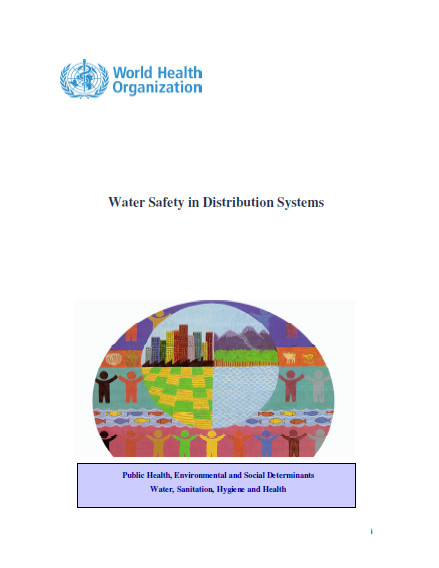Water Safety in Distribution Systems
 |
Public Health, Environmental and Social Determinants Water, Sanitation, Hygiene and Health
rapport Jun 2014 ; 157 pages
Ed. WHO - Genève
Téléchargeable sous format: PdF
Téléchargeable chez l'éditeur
Page de présentation d'un éditeur
Abstract:
Water quality deterioration in distribution systems, mainly caused by inappropriate planning, design and construction or inadequate operation and maintenance and water quality control, has been linked to a significant proportion of the burden of waterborne and waterrelated illness. Stresses on these systems caused by rapid urbanization, population growth and aging infrastructure further exacerbates the problems. This reference tool has been developed to help water suppliers and regulators who are familiar with the Water Safety Plan (WSP) approach enhance their risk assessment and management and investment planning for their water distribution systems. The guidance provided in this document focuses on applying the framework for safe drinking water, including WSPs, as described in the 4th edition of the Guidelines for Drinkingwater Quality. The scope of this document includes small to large piped water systems in both developed and developing countries. It applies from the outlet of primary treatment processes to delivery to consumers, including at standpipes, but does not include pipe work within buildings either before or after the point of delivery.
Mots clefs: |
distribution d'eau potable (CI) (DT) (OP) (ope) , hygiène (CI) (DT) (OP) (ope) , sécurité (CI) (DT) (OP) (ope) |
Editeur/Diffuseur: |
|
WHO
-
World Health Organization - Genève - Suisse |
En cas de lien brisé, nous le mentionner à communication@pseau.org